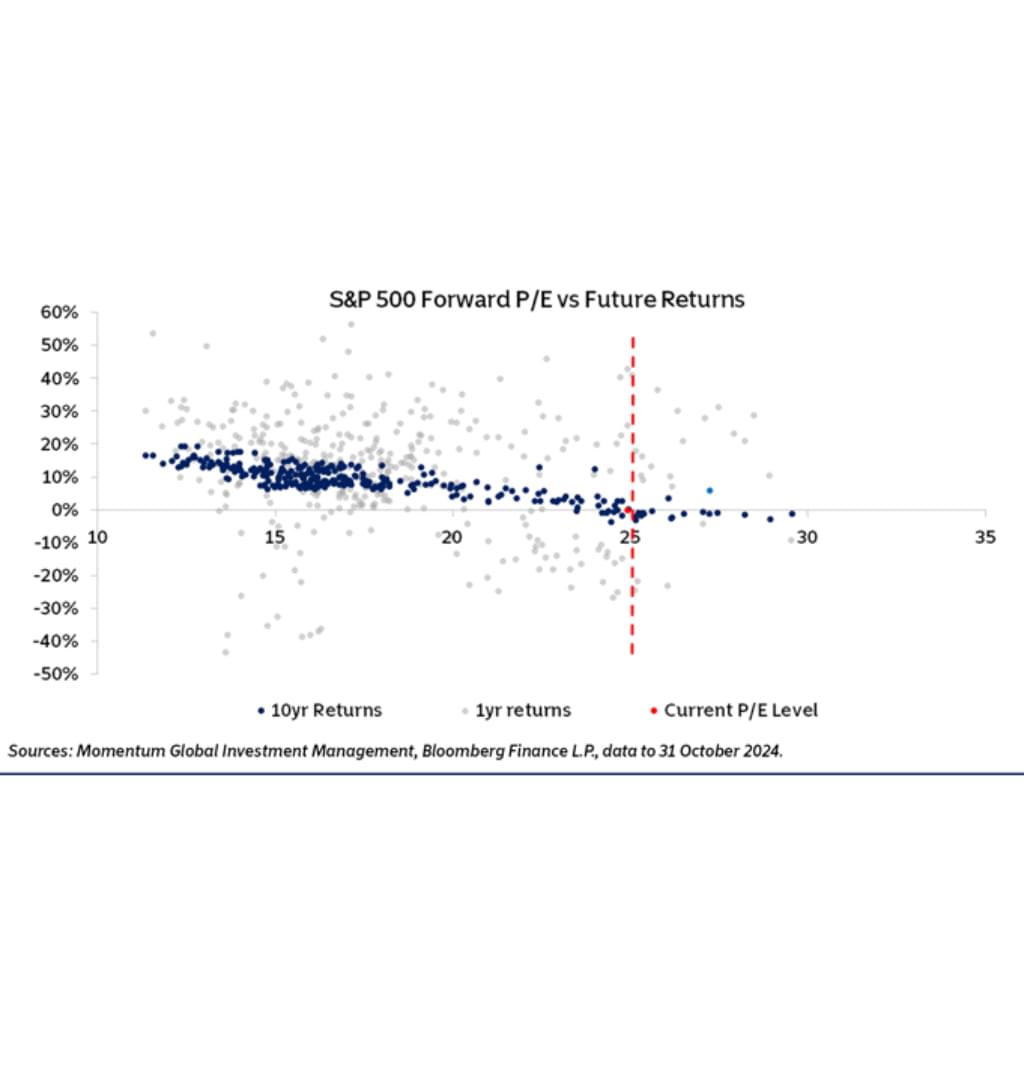The Price Of Patience
Filed in: Investment |Economy
21 November 2024
Understanding the Price-to-Earnings (P/E) Ratio and Market Returns
Key Points Summary
- Short-Term vs Long-Term Returns: Short-term returns (1 year) show no clear pattern with P/E ratios Long-term returns (10 years) show a strong correlation: lower P/E ratios typically lead to better returns
- Current Market Valuation: The market's P/E ratio is currently above 25 This high valuation historically suggests lower returns over the next decade This indicates we're in a relatively expensive market
- Investment Implications: Valuation matters most for long-term investing Investors should set realistic expectations given current high valuations Focus on finding value opportunities and maintaining a disciplined, long-term approach.
What Is A P/E Ratio?
Short-Term Results (1 Year) - Red Line
The red dots show one-year returns
These are scattered all over the place in the actual data but the trend line is shown here.
Key Point: The P/E ratio doesn't really help predict how stocks will perform in the next year
Long-Term Results (10 Years) - Dark Blue Line
The blue dots show ten-year returns
There's a clear pattern: lower P/E = better returns
Think of it like buying a house: paying a reasonable price usually leads to better long-term value
Current Situation
The market's P/E ratio is currently above 25 (shown by the dashed light blue line)
This is considered quite expensive historically
Based on past patterns, this high P/E suggests returns over the next decade might be lower than historical averages
Why This Matters for New Investors
Time Horizon is Key
If you're investing for the short term (1 year), the P/E ratio isn't very helpful
If you're investing for the long term (10+ years), paying attention to P/E ratios becomes much more important
Investment Strategy Implications
Consider spreading out your investments over time (dollar-cost averaging) Timing The Market Vs Time In The Market outlines this rationale.
Look for opportunities in markets or sectors with lower P/E ratios
Set realistic expectations: high P/E markets typically mean lower future returns
Don't try to time the market for short-term gains
Additional Context
High P/E ratios don't mean you should avoid investing altogether
Consider diversifying across different markets and investment types
Remember that while P/E ratios are important, they're just one of many factors to consider
The main takeaway: While today's high P/E ratio suggests caution, successful investing is about taking a long-term view and staying disciplined with your investment strategy, regardless of market conditions.
A discretionary fund manager is ideally placed to help navigate these issues on your behalf.
